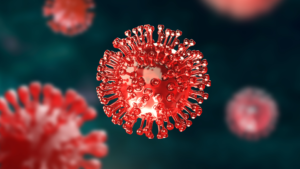The COVID-19 virus has created an unprecedented challenges for our healthcare systems and communities.
In 2020 the virus caused high mortality rates at critical care facilities. As the science catches up to this novel virus, early clinical reports and anatomical findings show progressive hypoxemia as the main cause of deterioration in patients with COVID-19.
As hypoxemia progresses, “standard therapy cannot penetrate the diffusion barriers in the lungs because they are limited by ambient pressure.” (2)
Preliminary evidence is showing HBOT is not limited by these barriers and may improve these patients’ conditions, especially if intervention occurs at early stages.
Benefits of Hyperbaric Oxygen Therapy for COVID-19 Patients
Clinical studies support the following benefits of hyperbaric oxygen therapy for those with COVID-19. For links to the clinical studies scroll to the bottom of this post.
- Rapid relief of hypoxic symptoms (1)
- Decreased chest pain (1)
- Decreased dyspnea (difficulty breathing) (1)
- General condition reversal (1)
- Improved liver function and myocardial injury (1)
- Improved lung pathology (1)
- Gradual improvement of arterial blood gas (1)
- Increased blood oxygen saturation (3)
- Shown to be safe during mechanical ventilation (4)
If we extrapolate these observations to the COVID-19 situation, an early intervention before the need for mechanical ventilation could be of extraordinary utility for saving lives. In this regard hyperbaric oxygen therapy (HBOT) that consists of exposure to 100% oxygen under increased atmospheric pressure up to 2.4 atm could be a great resource to improve the outcome from the infection when it is administered at early stages as soon as a reduction of arterial oxygen concentration is detected.
Additional Reading:
Source: International Hyperbarics Association
Information on this website is provided for educational purposes only. It is not intended as a substitute for the diagnosis, treatment, and advice of a qualified licensed professional. This website offers general information and in no way should anyone consider that this website represents the practice of medicine. This website assumes no responsibility for how this information is used. Also note that this website frequently updates its contents, due to a variety of reasons. No statements or implied treatments on this website have been evaluated or approved by the FDA. It is important that you do not reduce, change, or discontinue any medication or treatment without first consulting your doctor. Please consult your doctor before beginning any new program of treatment.
Clinical Research
The following research article highlights the benefit of hyperbaric oxygen therapy for people who have sustained a traumatic brain injury
Do you have questions about a specific symptom or condition?
1. Naval Specialty Medical Center Program Team: Demonstration report on inclusion of hyperbaric oxygen therapy in treatment of COVID-19 severe cases.
Study excerpt:
“Clinical reports and pathologic anatomic findings shown, progressive hypoxemia is the main cause of deterioration in patients with COVID-19. ‘The mortality rate of critical patients in WuHan is close to 60%, and we are trying to solve the problem of hypoxia,’ Zhong Nanshan said on 27 th Feb. HBOT is the strongest non-invasive oxygen therapy. In the early stage, 5 cases of severe and critical patients with COVID-19 a were clinically treated, which proved that the long-term excellent clinical effect of using HBOT in treating hypoxia was also applicable to COVID-19 patients.”
“The effect of HBOT is better than breathing atmospheric high flow oxygen and mechanical ventilation techniques. It is suggested that promote HBOT as an oxygen therapy treatment for critically ill patients with COVID-19, which is expected to significantly improve the treatment efficiency, reduce the medical pressure and the risk of infection, and decrease the mortality rate of critical patients. It has practical significance for further accelerating the overall victory of this epidemic, achieving the most effective treatment and realizing infection prevention control.”
2. Hyperbaric oxygen treatment of novel coronavirus (COVID-19) respiratory failure by Dr Paul G Harch
Study excerpt:
“With each once daily administration of HBOT the patients experienced sustained elevation of oxygen saturation and improvement in symptoms that persisted to the following morning.”
3. COVID-19, acute respiratory distress syndrome (ARDS), and hyperbaric oxygen therapy (HBOT): what is the link?
Study excerpt:
“He noted that the initial stage of COVID-19 pneumonia is only now being understood as “silent hypoxia,” alluding to its “insidious, hard-to-detect nature” as he described it. Oxygen saturation levels fell from the normal range 94–100% to as low as 50%, but patients did not experience shortness of breath until the depleted levels reached critical values because CO2 continued to be released. By the time CO2 does start to accumulate, triggering a feeling of breathlessness, many COVID-19 patients progress quickly into respiratory failure.”
4. Safety of hyperbaric oxygen therapy in mechanically ventilated patients
Study excerpt:
“To evaluate the epidemiology of patients who require mechanical ventilation during hyperbaric oxygen therapy.”

